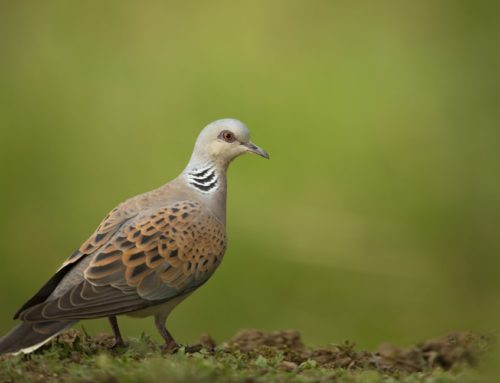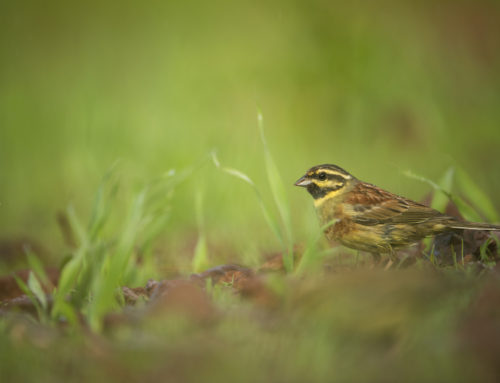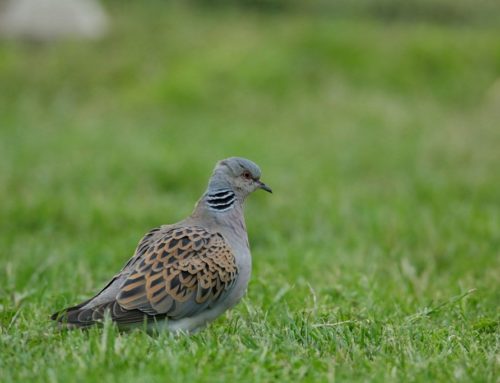Investigating Hawfinch declines

Hawfinch by Andrew Stanbury
Background
Hawfinch Coccothraustes coccothraustes is a relative newcomer to the RBBP list of monitored species, having been added in 2006 following evidence of population decline and range contraction, particularly through the 1980s and 90s (Langston et al. 2002). The 2008-11 national bird atlas found the number of occupied 10km squares had reduced by 76% since 1968-72 (Balmer et al. 2013) and the current UK population estimate is 500 – 1,000 breeding pairs (Clements 2013), down from 3,000-6,500 estimated in the 1988-91 atlas (Gibbons et al. 1993). Reasons behind these declines were largely unknown although other woodland specialists were showing concurrent population contractions. In 2011 a workshop was convened to bring together Hawfinch experts and discuss ideas for future work. This led to the formation of an informal Hawfinch working group through which information, ideas and expertise are shared, including the production of an annual newsletter reporting on projects and observations from across Britain.
Early research shows woodland cover is important
RSPB Centre for Conservation Science began research into possible causes of hawfinch declines in 2012. The first part of the study focussed on assessing whether habitat change at landscape and local scales might be linked to population declines. national bird atlas data were used to compare areas where breeding hawfinch had been lost with those where they remained. The main finding (perhaps unsurprisingly) was that they were more likely to have persisted in landscapes with a high proportion of mature, broadleaved woodland. Within woodland they preferred nest sites close to edges, glades and tracks over densely wooded interior areas (Kirby et al. 2013).
Hawfinch radio tracking helps locate nests
Between 2013 and 2017 our study focussed on breeding ecology, attempting to establish whether poor nesting success was contributing to population declines. Finding Hawfinch nests is extremely difficult as they are usually sited high up in the tree canopy (our average was 16m). In addition to this, the adult birds are not particularly territorial or vocal and there aren’t many of them… To help us find a reasonable sample we teamed up with bird ringers in the Wye Valley and North Wales during the pre-breeding season to fit radio- tags to females. Through sustained tracking, we were able to locate their nests once they began incubating their eggs, although this was far from straightforward. After overcoming problems with tag attachment, tracking in steep, wooded terrain and following movements over far greater distances than expected, we ended up monitoring a sample of around 70 nests across the two study areas and five breeding seasons. Analysis of our nest data suggested that nest survival to fledging averaged 36%, similar to other woodland open nesting species and within the range expected for population stability (Kirby et al. 2018).

Image by Andy Hay (rspb-images.com)
Nest Cameras reveal causes of nest failure
As part of our nest monitoring, we fitted cameras to a sample of the active nests. This helped reveal the number of chicks hatching and fledging as well as causes of nest failure, which included poor weather and predation by Jays, crows, Goshawks and Great Spotted Woodpeckers. Interestingly, there were no recorded instances of Grey Squirrel predation despite them being common within the study woods.

Great Spotted Woodpecker predating Hawfinch nest by Will Kirby
Nest monitoring reveals new insights into breeding behaviour
In addition to measuring breeding success we have discovered new insights into hawfinch breeding behaviour, including evidence that they can have two successful nesting attempts in the same season (Kirby et al. 2019). Females have also been recorded moving several kilometres to re-nest in a different wood after initial nest failure.
Habitat and resource use
Since 2017 we have been concentrating efforts on establishing how Hawfinches use their local landscape and what resources are important to them throughout the year. GPS tags have been fitted to birds during both late winter and spring/summer periods. These devices (weighing just over 1g) are programmed to collect precise (down to a few meters) locations at hourly intervals and can record for several days. The data provides a unique insight into the daily movements of individual birds and has again highlighted that they are mobile over wide areas, exploiting not only woodlands but also hedgerows, gardens and individual trees in farmland. This section of the work is on-going and our data has yet to be fully analysed.
Hawfinch Diet
Alongside the RSPB led fieldwork, Cardiff University PhD student Ewan Stenhouse began a project to investigate the year-round diet of Hawfinches through faecal metabarcoding (genetically identifying food items within faecal samples) in 2017. Samples have been collected at ringing sites across England, Wales, Denmark and Germany and although data analysis is in the early stages, there are already fascinating results beginning to emerge, with UK samples containing 87 different plant and 118 different invertebrate taxa. We are eagerly awaiting the full results of this study, which when combined with the project work described above, will enable us to start making management recommendations to benefit Hawfinches, with the ultimate aim to reverse their decline.

Hawfinch chick by Vivian Hartwell

Image by Ashley Banwell
Acknowledgements
This work is funded by the Action for Birds in England partnership between RSPB and Natural England. The work wouldn’t be possible without the input and enthusiasm of the many other individuals and organisations that provide access to woods and help with fieldwork.
For further details please contact will.kirby@rspb.org.uk
References
Balmer, D.E., Gillings, S., Caffrey, B.J., Swann, R.L., Downie, I.S. & Fuller, R.J. 2013. Bird Atlas 2007–11: The breeding and wintering birds of Britain and Ireland. BTO Books, Thetford.
Clements, R. 2013. A UK population estimate for the Hawfinch. Br. Birds 106: 43–44.
Gibbons, D.W., Reid, J.B. & Chapman, R.A. 1993. The New Atlas of Breeding Birds in Britain and Ireland: 1988–1991. T.&A.D. Poyser, London.
Kirby, W.B., Bellamy, P.E., Stanbury, A.J., Bladon, A.J., Grice, P.V. & Gillings, S. 2015. Breeding season habitat associations and population declines of British Hawfinches Coccothraustes coccothraustes. Bird Study 62: 348–357.
Kirby, W.B., Stanbury, A.J., Bellamy, P.E. & Lewis, J.L. 2019. Double-brooding and renesting in British Hawfinches. Br. Birds 112: 170–171.
Kirby, W.B., Stanbury, A.J., Lewis, J., Smith, D.L., Cross, A.V., Grice, P.V., & Bellamy, P.E. 2018. Nest survival, causes of failure and productivity of British Hawfinches Coccothraustes Coccothraustes. Bird Study 65: 279–289.
Langston, R., Gregory, R., & Adams, R. 2002. The status of the Hawfinch Coccothraustes coccothraustes in the UK 1975–1999. Br. Birds 95: 166–173.






